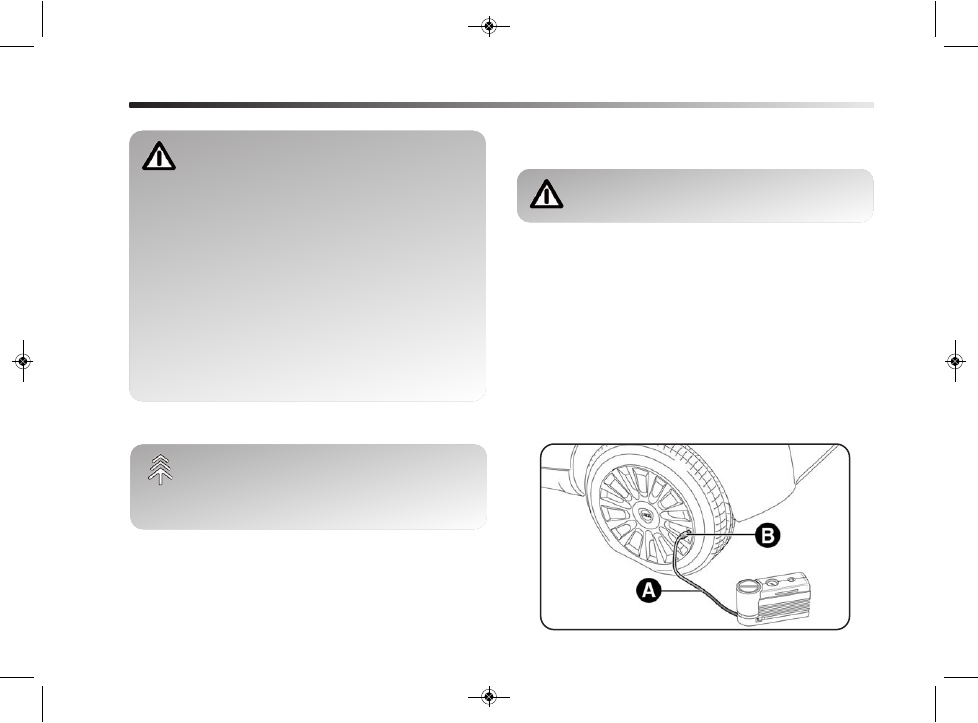Lancia DELTA. Instruction - part 13

200
IN AN EMERGENCY
INFLATION PROCEDURE
Put on the protective gloves provided
with the quick tyre repair kit.
❍ Engage the handbrake. Unscrew the tyre valve cap,
take out the filler hose A - fig. 4 and tighten the ring
nut B on the tyre valve;
fig. 4
L0E0077m
The bottle contains ethylene glycol. It con-
tains latex that might cause allergic reac-
tions. It is harmful if swallowed. It is irri-
tant for the eyes. It may cause sensitisation if in-
haled or on contact. Avoid contact with eyes, skin
and clothes. In the event of contact, wash immedi-
ately with plenty of water. Do not induce vomiting
if swallowed. Rinse your mouth and drink plenty of
water. Call a doctor immediately. Keep out of the
reach of children. The product must not be used by
asthmatics. Do not breathe in the vapours during
insertion and suction. Call a doctor immediately if
allergic reactions are noted. Store the bottle in the
specific compartment, away from sources of heat.
The sealant has an expiry date.
Replace the bottle containing out-of-date
sealant. Dispose of the bottle and the sealant
properly. Dispose of the components in com-
pliance with national and local regulations.
195-232 Delta GB 1ed 03/03/14 09.14 Pagina 200